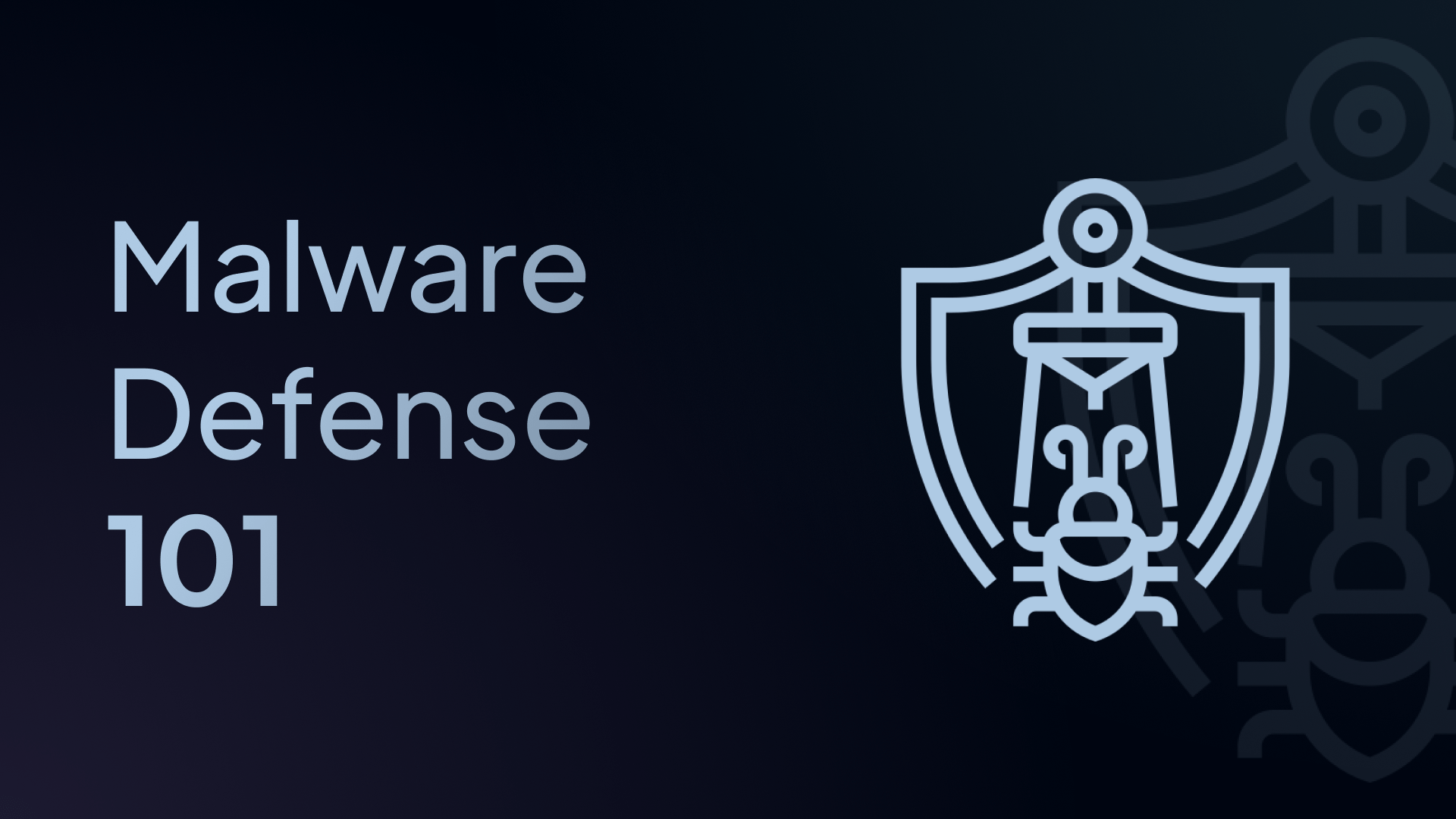Malware Defense 101: How to Block Malicious Content at the DNS Layer
Discover how modern malware defense works and why DNS filtering is one of the most effective ways to block malicious content before it hits your devices.

Malware attacks don’t start with a payload – they start with a connection.
DNS filtering gives you the power to stop threats before they ever reach your network.
In this guide, we’ll explain what malware defense really means in 2025 and why blocking malicious content at the DNS level is one of the smartest, most lightweight ways to stay protected.
Summary
Malware defense is most effective when it stops threats before they connect. DNS filtering:
✅ Blocks malware, phishing, and botnets
✅ Works without agents across all devices
✅ Offers visibility and policy control per user or device
✅ Enhances your security stack with real-time threat intelligence
What Is Malware Defense?
Malware defense refers to the strategies, tools, and practices used to detect, prevent, and remove malicious software (malware) from compromising your network and devices. Malware can come in many forms: viruses, spyware, adware, worms, rootkits, ransomware, and more.
Effective malware defense needs to be proactive, layered, and adaptable, especially as threat actors evolve their tactics to avoid detection. That’s why DNS protection is crucial, as it stops malware earlier in the chain, preventing exposure to risks before they connect to a device or your network.
Why Traditional Malware Defenses Fall Short
Despite billions spent annually on cybersecurity, malware infections still happen and often succeed. Why?
Because most traditional security tools are reactive, they rely on signature detection, behavioral heuristics, or endpoint visibility – all of which can be bypassed by encryption, obfuscation, or user error.
This is where DNS-layer protection shines. It intercepts threats before a connection is even established, blocking communication with malicious domains and command-and-control (C2) servers.
Why Malware Blocking at the DNS Level Works
When malware tries to communicate with its remote server – to download a payload, exfiltrate data, or receive instructions – it usually has to resolve a domain name first. That means a DNS query is made before any other connection happens.
If you can block that DNS request, the malware can’t complete its mission.
✅ Stops Threats Before They Reach the Device
DNS filtering blocks malicious requests before a single packet is exchanged with a dangerous site. This early intervention is key in preventing drive-by downloads, phishing link access, and C2 callbacks.
✅ Protects All Devices – Even BYOD & IoT
Whether it’s a laptop, smartphone, or smart printer, all devices use DNS. DNS filtering protects them without installing software agents, which is especially valuable for unmanaged endpoints or guest networks.
✅ Lightweight, Fast, and Invisible to End Users
DNS filtering doesn’t interrupt workflows or slow down devices. It's fast, reliable, and transparent to users – until they try to access something malicious.
Common Types of Malicious Content You Can Block with DNS Filtering
When paired with threat intelligence, DNS filtering can stop a wide array of threats:
| Malicious Content Type | Description |
|---|---|
| Malware Domains | Sites that distribute trojans, spyware, worms, and ransomware. |
| Phishing & Spoofing | Fake login pages and credential-harvesting sites. |
| Command & Control Servers | Used by malware to receive commands and exfiltrate data. |
| Exploit Kits | Sites that deliver malware through browser vulnerabilities. |
| Cryptojacking | Domains that run browser-based crypto miners. |
| Botnet Infrastructure | Hosts that manage infected systems across the internet. |
Best Practices for Malware Defense Using DNS Filtering
Here’s how to implement an effective DNS-first malware defense strategy:
1. Enable Core Threat Categories
Start by activating Control D’s core threat protection categories:
- Malware
- Phishing
- Ads & Trackers
- Torrents & Piracy
- New Domains
- Adult Content
- Gambling
This covers the most common threats.
2. Segment Policies Based on Risk Profile
Not every device or user needs the same level of access. Consider:
- Restricting guest or BYOD devices
- Allowing broader access for IT or dev teams
- Locking down critical infrastructure devices to allow only essential domains
Use Control D's Profiles to apply the right policy to the right group.
3. Monitor and Review Logs
Set a schedule (weekly, monthly) to review blocked DNS requests. Look for:
- Repeat access attempts to malicious domains
- High-risk devices or users
- Shadow IT or suspicious third-party tools
- DNS tunneling indicators (e.g., long, random-looking domain names)
Use this data to inform your incident response and security posture.
4. Integrate with Broader Security Stack
DNS-layer defense doesn’t replace endpoint or firewall tools – it complements them. Use Control D alongside:
- Endpoint Detection and Response (EDR) platforms
- SIEM tools (Control D logs can be exported)
- Web proxy or CASB tools
- Threat-hunting programs
This gives your SOC a multi-layered view of risk and better coverage of blind spots.
5. Educate Users
Many attacks begin with social engineering. Combine DNS filtering with:
- Phishing simulation and training
- Clear reporting processes for suspicious emails
- Awareness around links and downloads
When DNS filtering blocks a malicious site, make it a teachable moment.
How Control D Blocks Malicious Content at the DNS Layer
Control D is a fully customizable DNS filtering platform that empowers organizations to block malicious content in real time, without sacrificing performance or user experience.
Whether you’re an SMB, school, enterprise, or just someone who wants to stay safe online, Control D gives you malware defense where it matters most: at the DNS layer.
Here’s how Control D delivers powerful malware blocking:
✅ AI-Driven Threat Intelligence and Real-Time Protection
Control D goes beyond static blocklists by integrating AI-powered machine learning models that analyze DNS traffic patterns in real time. These models continuously learn from global DNS behavior to identify suspicious or malicious domains, even if they've never been seen before.
Combined with curated threat intelligence sources, this AI-enhanced approach enables Control D’s malware filter to achieve an industry-leading 99.97% block rate, making it one of the most effective first lines of defense against:
- Malware
- Phishing attempts
- C2 callbacks
- DNS-based attacks.
✅ Category-Based Blocking for Added Protection
In addition to specific threat feeds, Control D lets you block entire categories that are often linked to malware, including:
- Torrents and P2P file-sharing
- Adult content and gambling
- Hacking and proxy services
This reduces the risk of users accidentally stumbling upon malicious content during everyday browsing.
✅ Customizable Policies Per User, Device, or Network
You can assign different filtering rules to different users, devices, or IP addresses. For example:
- Enforce strict filtering for employees in finance or HR
- Allow more relaxed rules for IT staff
- Create separate policies for student, staff, and guest networks
Each policy can have tailored malware protection settings, giving you granular control.
✅ Zero Trust Filtering for New or Low-Reputation Domains
Many malicious domains are short-lived – registered just hours before an attack. Control D allows you to block access to:
- Newly registered domains
- Domains with no historical reputation
- Domains hosted in high-risk geographies
This prevents attackers from leveraging fresh infrastructure to bypass traditional blocklists.
✅ No Software Installation Required
Control D works across all devices – without agents or apps. Configure it at the:
- Router level (to protect all connected devices)
- Individual device level (laptops, smartphones, etc.)
- Network level via DHCP or Active Directory
Perfect for organizations with remote workers, guest networks, or BYOD policies.
✅ Logging and Alerting
Control D provides rich analytics that show:
- Which devices attempted to reach malicious domains
- How many requests were blocked by malware filters
- What threat categories are most common
- Timestamped logs for audit and compliance
You can use these insights to improve your security posture, educate users, and comply with regulatory requirements.
Summary: Why Control D Is the Go-To Solution for Malware Defense
| Feature | Control D Advantage |
|---|---|
| Malware Blocklists | Integrated threat feeds block known malware domains. |
| Zero-Day Protection | Block new, unknown domains based on reputation and age. |
| Agentless Deployment | Works on all devices with no software to install. |
| Granular Policy Control | Customize filtering per user, device, or network. |
| Visibility and Reporting | Real-time insights into blocked threats and network activity. |
Final Thoughts
The best way to protect your network from malware isn’t to wait until it reaches your devices. It’s stopping it before the connection is ever made, and DNS is one of the most effective chokepoints.
With Control D, you get DNS filtering that’s:
- Easy to deploy
- Smart enough to adapt
- Transparent to users
- Backed by real-time threat intelligence
- Integrated into your larger security strategy
Whether you’re securing a global enterprise or your home network, Control D provides the visibility, flexibility, and control to block malware at the most efficient layer: DNS.


